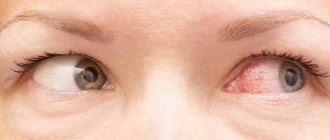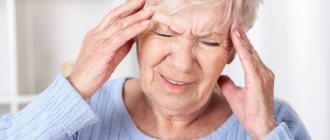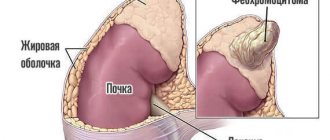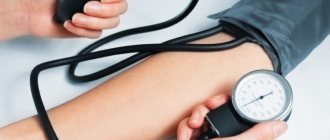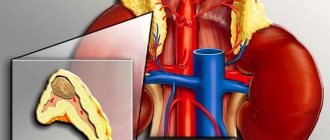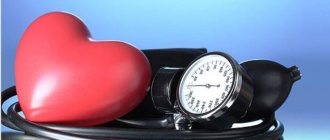Pressure is a general indicator indicating the force with which blood acts on the walls of blood vessels. For the most part, when people talk about blood pressure, they mean just one type of blood pressure – blood pressure.
However, there are other varieties, including venous and capillary. They do not play a major diagnostic role, therefore an assessment of the blood pressure level is required.
Depending on the nature of the dynamics of blood pressure, two diametrically opposed processes are distinguished: hypertension and hypotension.
In the first case, blood pressure rises and reaches values above 140/90, while in the second it falls, reaching figures of 90/60 mmHg.
These are a kind of threshold values, above or below which we can talk about pathology.
According to medical statistics, the development of hypotension is observed much less frequently than the development of hypertension. What this is connected with is not known for certain.
What do you need to know about a blood pressure level of 90 to 60, and how dangerous are such indicators for the health and life of the patient? It is necessary to understand the issue in more detail.
For whom are blood pressure readings of 90 to 60 normal?
Blood pressure in the indicated values can be considered normal only for three groups of the population. These are children under 7 years of age, pregnant women and people hereditarily predisposed to hypotension.
For everyone else, the drop in blood pressure is either physiological (if it happened once) or pathological (if it occurs on a regular basis).
In the latter case, hypotension can be either primary (i.e., an independent pathology) or secondary (it can be a consequence of a number of diseases, in other words, it is a symptom of them).
Varieties
Types of hypotension:
- Physiological is a natural, non-pathological condition associated with the physiological characteristics of the body, in which it feels great.
- Pathological (true) - an abnormal condition that causes discomfort and unpleasant, sometimes severe symptoms, for which a person needs therapy.
According to the etiological factors, hypotension occurs:
- Primary is an independent pathology provoked by external factors or genetic predisposition.
- Secondary - occurs as a concomitant symptom or complication of a serious pathology in the body.
Causes of a one-time drop in blood pressure
Blood pressure is not at the same level all the time. It changes every second, that is, it is a dynamic indicator.
The degree of danger of hypotension should be assessed based on the condition of the blood vessels, tonometer numbers and the frequency of development of the pathological process.
In most cases, we have to talk about a one-time change in blood pressure (the so-called crisis). Why is this phenomenon observed?
The reasons are:
- Orthostatic changes. In other words, orthostatic hypotension. It develops when there is a sudden change in the position of the patient’s body in space. For example, if a person suddenly gets up from a lying or sitting position, while he has been at rest for a long time. This provokes a violation of blood circulation in the riverbed, and at all levels. Characteristic signs are observed: darkening of the eyes, weakness, loss of coordination, ringing in the ears. A short-term fainting state may occur.
- Traumatic brain injury. The one that just happened is common. Impaired blood circulation is associated with brain damage. This is possible with a concussion of cerebral structures (for example).
- The reason for the pressure of 90 to 60 may also lie in an allergic reaction. Allergy is accompanied by the mobilization of all the forces of the body to fight an imaginary foreign object. The extreme degree of an allergic reaction is anaphylactic shock, in which the pressure reaches critically low levels. Urgent and qualified medical assistance is required. Better in a hospital setting.
- Dehydration. In other words, there is a lack of fluid circulation in the body. It happens quite often, especially in the hot season or in special regions of the globe (tropics, subtropics). By reducing pressure, the body seeks to minimize fluid loss. This is a completely physiological, although dangerous phenomenon. Replenishment of water in the body is required.
- Stress, especially intense. They develop in almost everyone, but do not always end in attacks of hypotension (low blood pressure). We are talking about people of a special type, on the one hand, but on the other hand, we have to talk about some features of the body of a particular person. It is necessary to understand each case separately.
- Intense physical activity, such as when playing sports or performing professional duties. This is a twofold process, on the one hand, the pressure at the first moment increases in order to provide the tissues with the necessary amount of nutrients and oxygen. On the other hand, it then drops, especially after the end of physical activity. A significant difference is dangerous and can cause a heart attack or stroke. You need to carefully monitor your well-being and not overindulge in activity if you have problems with the cardiovascular system.
A blood pressure of 90 over 60 is dangerous, but not always. You need to look at the individual characteristics of the body and the reason that caused the jump in blood pressure.
Causes
There are two types of hypotension. It is customary to highlight:
- Primary (physiological). It forms independently and does not cause serious changes in a person’s well-being.
- Secondary. Hypotension develops as a complication of an existing disease and is accompanied by severe symptoms.
Primary
Low blood pressure can be inherited. Women and girls with an asthenic body type are especially often hypotensive. The condition is not accompanied by severe symptoms. A natural decrease in blood pressure occurs during periods of hormonal changes:
- period of bearing a child;
- menstruation;
- menopause
Adolescent hypertension is an acceptable norm. The condition is caused by hormonal changes occurring in the body, lack of stability in the functioning of the cardiovascular system and too rapid growth of the child. Blood pressure stabilizes on its own after puberty and does not require any medical adjustment.
The development of primary hypotension can also be provoked by:
- overwork – nervous and physical;
- dependence on weather conditions;
- climate change;
- sedentary lifestyle.
In adults, primary hypotension occurs due to lack of physical activity. The result of physical inactivity is a decrease in the elasticity of the walls of blood vessels. But if an elderly person leads a fairly active lifestyle, then the primary form of hypotension does not threaten him.
No ads 1
Secondary
Secondary hypotension occurs as a complication of another serious disease. The reasons can be:
- pathologies of the thyroid gland;
- disruption of the pituitary gland and adrenal glands;
- anemic conditions;
- heart disease;
- brain injuries;
- diabetes;
- tuberculosis;
- infections;
- severe burns;
- allergy;
- intoxication of various origins.
The effectiveness of treatment for secondary hypotension depends on the results of therapy for the disease that provoked it.
Secondary hypotension sometimes occurs during long-term use of the following medications:
- diuretics;
- antispasmodics;
- ACE inhibitors;
- calcium antagonists.
Reasons for regular low blood pressure
In this case, the reasons are much more serious. You need to understand the hospital conditions or, at a minimum, undergo consultations with different specialists.
What are the factors that reduce blood pressure (secondary hypotension) on a regular basis?
- Stomach ulcer, especially one that lasts for a long time and is not treated. We are talking about bleeding of a constant nature. The more intense the outpouring of hematological fluid, the more pronounced the decrease in blood pressure. In most cases, this process is caused by a decrease in the amount of blood in the bloodstream.
- Pregnancy. The gestation period is difficult for the fairer sex in itself: there is toxicosis, difficulties with movement, and lipid metabolism disorders. The picture is complemented by a constant decrease in the level of blood pressure in a pregnant woman.
- Acute heart attack, other changes in cardiac function. After a heart attack, the functioning of the organ is disrupted, a significant decrease in blood pressure occurs, so indicators of 90 to 60 are a typical picture.
- Coronary heart disease, congestive heart failure. Provokes disruption of the heart and the entire circulatory system as a whole. Requires urgent medical correction, preferably in a specialized cardiology hospital.
- Diseases of the hypothalamic-pituitary system. This is a whole layer of pathological processes, caused in most cases by disorders in the chiasmal-sellar region. Usually we are talking about injuries or tumors (adenomas and others). It is not so easy to identify such a cause of low blood pressure; an MRI is necessary.
- Hormonal imbalances resulting from insufficient production of specific thyroid substances. This is the so-called hypothyroidism. With hyperthyroidism, when there is an excess of hormones, this almost never happens. The disease can be suspected by specific accompanying symptoms and phenomena.
- Impaired cortisol production. As a result of diseases and operations. Cortisol is responsible for part of the regulation of blood pressure levels. This phenomenon is called Addison's disease and can be accompanied by tonometer readings of 90 to 60 and a pulse of 90-95.
- Abuse of antihypertensive drugs. Primarily calcium channel blockers, ACE inhibitors, diuretics. They cause a drop in blood pressure at a systematic level. There should be no overdose. Tricyclic antidepressants, including Doxepin and Imipramine, have a similar effect on blood pressure. Drugs for the treatment of erectile dysfunction based on sildenafil and tadalafil also lower blood pressure, especially when used together with nitroglycerin.
- Poisoning of various etiologies: alcohol, drugs, bacterial toxins during infectious processes. Blood redistribution occurs as a result of capillary expansion. This is dangerous because it can cause a sharp drop in blood pressure.
- Dystonia, stroke, other cerebrovascular accidents of a transient and persistent nature. Urgent medical attention is required.
- Osteochondrosis of the cervical spine. It can also cause pressure of 90 to 60 or even lower. Causes vertebrobasilar insufficiency with cerebrovascular accident.
If the pressure is 90 to 60, then there is a pathological process in the body, with the exception of a hereditary factor. You need to be thoroughly examined. Under the supervision of a cardiologist at a minimum.
Norm and deviation
Blood pressure 90/60 – what does this mean? The doctor receives information about blood pressure based on the indicators determined by the tonometer. The first number is systolic (upper) - indicates the time of contraction of the heart muscle. The second - diastolic (lower) - shows the pressure of the blood during the period of its pushing into the arteries.
Important! Doctors take 120/80 mm as the physiological norm. rt. Art.
Blood pressure levels can fluctuate and largely depend on a person’s current emotional and physical state. If blood pressure drops only periodically, then there is no cause for concern. But if low pressure is a constant condition, then it is necessary to find the reasons for such a deviation.
In some cases, the blood pressure level is 90(99)/60(66) mm. rt. Art. is considered by doctors as the norm. This statement applies to people with an asthenic body type, teenagers. In addition, many women feel great with this level of pressure.
Another group of people whose “working” blood pressure is 110(120)/70(80), if it decreases to the level of 90/60, begin to experience unpleasant symptoms. In this case, it is necessary to consult a therapist.
Blood pressure 90/60 during pregnancy
As already mentioned, pregnancy is a complex process. As is clear, such pressure (85 to 60 or 55) does not require therapy.
However, there is little pleasant in gestation: the hormone progesterone disrupts blood circulation, the woman experiences secondary anemia and constant tachycardia. However, this is quite normal.
Such hypotension is called physiological and does not require correction with medications except in exceptional cases. Consultation with a gynecologist is recommended.
Are similar numbers on a tonometer with a pulse of 60-80 dangerous?
There are several ways to answer. On the one hand, a pulse of 60-75-80 is not yet bradycardia, that is, a decrease in the number of heartbeats.
On the other hand, you need to look at the reason that brought such a difficult process to life.
If it is vegetative-vascular dystonia, we are talking about one thing. But if a patient has a heart attack, it's a completely different matter. Here the number of heartbeats per minute does not play such a role.
What does 90-60-90 mean? Slim body numbers
Home / Articles / Cosmetology / Body care
December 2, 2014 |
Every girl knows what 90 60 90 means. These are the model standards for a female figure that have been established in society and mean the girth of the chest - waist - hips. There is an opinion among female representatives that this is the kind of figure that men have always liked. But where did this belief come from? And why does every girl strive for a social ideal? There is also an opinion that these numbers are a far-fetched thing and were created by fashion designers only in order not to re-cut patterns, the size of which was considered ideal. Let's figure out together which figure men like best, how to achieve a result of 90-60-90, and also give an example of several famous women whose figure parameters are close to ideal.
What does an ideal figure mean for a man?
Many men know what 90 60 90 means. But in reality, both thin and plump women do not remain without male attention. Each man is unique in his own way, and if one chose a plump girl as a companion, then the other chose to go through life with a thin lady. So, to the question of what figure men consider ideal, there is simply no specific answer.
Psychologists say that men's assessment of attractiveness develops in the first 10 minutes of communication. And in the future this opinion practically does not change. Scientists conducted an interesting experiment on male students. So, a small group of hungry students were shown photos of different women, then they looked at the same photo after a hearty lunch. The result surprised everyone: in a hungry state, guys were more interested in girls who were fuller, and when their stomachs were full, in girls who were thin. The conclusion suggests itself - there is no single standard!
How to achieve 90-60-90
Even numerous facts confirming that the ideal is a myth will not take away the desire of girls to have a 90-60-90 figure. In order to somehow bring the centimeters closer to the desired numbers, you need to follow three rules.
- First: play sports. Sport has never harmed anyone. Focus on problem parts of the body, for example, if you are not happy with your waist, work out your abdominal muscles, back and sides. If you have narrow hips, focus on this part of the body. As for the breasts, nature decides everything here.
- Second: eat right. You will never have a slim figure if you eat a lot of fatty, starchy and sweet foods. Slimness requires sacrifice, it is better to replace flour with porridge, sweets with honey, and fatty foods with vegetable salads. Also include protein foods in your diet, because muscles are essentially protein.
- Third: love yourself. Even if you don't consider yourself beautiful, you still need to learn to love your body. This is the only way to achieve any success.
Famous women with ideal parameters
This article would not be interesting without vivid examples of owners of a beautiful figure close to ideal parameters.
- Monica Bellucci is an Italian beauty, model and actress, with a height of 178 cm and a weight of 68 kg, her measurements are 91-60-88. She successfully works in the fashion and film industries even after 40 years.
- Vera Brezhneva knows what 90 60 90 means. She was an ugly duckling as a child, but now she boasts a perfect score: 90-60-90. Vera actively plays sports and limits herself to food. According to the actress, such forms came to her after her daughter was born. Let us remind you that Vera weighs 53 kg and is 171 cm tall.
- Jessica Alba is an American film actress. Her parameters are close to ideal: 88-61-88. Jessica doesn't eat bread at all, uses an exercise bike and runs a lot. Her height is 168 cm, weight – 55 kg.
Did you like the article? Share with friends:
Leave your comment: Cancel
With a pulse of 90-100?
This is already an increased number of heartbeats. A pressure of 90 over 60 and a pulse of 100 beats per minute or higher is pronounced tachycardia, which indicates the following conditions:
- A marked decrease in body temperature (in the language of a common person - loss of strength).
- Significant blood loss. Usually as a result of injury or illness.
- Avitaminosis. Lack of vitamin B-12 and folic acid. Hypovitaminosis can also manifest itself in a similar way.
- Shock states.
- Acute infectious and inflammatory processes of various nature. Also just inflammatory processes of non-infectious etiology (hepatitis, pancreatitis, gastritis).
- Pregnancy.
- Anemia (iron deficiency primarily).
- Various lesions of the heart and circulatory system. Here are just a few possible reasons. In fact, there are many more of them.
Causes of low blood pressure
| Hypotension | ||
| Etiology | Causes | At-risk groups |
| Primary | Heredity, poor nutrition, stress, atmospheric changes, hormonal imbalance, overwork, stuffiness, vitamin deficiency, acclimatization, prolonged exposure to the sun, physical or emotional stress. | Elderly people, teenagers, young girls. |
| Secondary | Inflammatory process, rheumatism, intoxication, cervical osteochondrosis, heart failure, diabetes mellitus, hepatitis, oncology, tuberculosis, cirrhosis, myocardial infarction, infection, cystitis, gastric ulcer, iron deficiency anemia, alcoholism. | People suffering from chronic diseases who abuse alcohol. |
First aid for low blood pressure
There is very little you can do on your own. Qualified medical assistance is required.
If the pressure drops to 90 over 60, this is a low, but not critical indicator, but you should not hesitate to visit a doctor.
You can help yourself or a nearby patient in the following ways:
- Take a lying position. Move as little as possible, especially not get up, since orthostatic hypotension is possible in addition to the main process.
- Loosen all things putting pressure on the neck: jewelry, shirts, ties, bow ties, etc. Because adequate blood flow is necessary.
- Place a damp cloth on the patient's head: a simple handkerchief will do.
- Provide fresh air flow into the room. You need to do this first.
- Give the patient something to eat that is high in table salt.
- It would be nice to take a Citramon tablet or regular aspirin. They will help to quickly increase blood pressure, and will do it very gently.
- Drink tea or strong coffee (if your pulse is no more than 80 beats per minute).
Treatment
What to do if you have low blood pressure? To eliminate the unpleasant symptoms of the condition, it is necessary to raise blood pressure. If the pressure has dropped, then to normalize the condition, it is recommended to drink a cup of hot coffee or strong brewed tea. But doctors do not advise using stimulants too often, since the development of addiction is possible.
There are a number of recommendations that will help increase blood pressure. The tips are as follows:
Causes of low blood pressure with high heart rate
- You need to get out of bed slowly in the morning. First, you need to lie down for a while, wake up completely, and only then get up. This will prevent the development of dizziness, nausea and fainting.
- You should always drink at least two liters of fluid during the day.
- Meals should be fractional. Food should be taken at least 4 times a day. At the same time, the diet must fully satisfy all the body’s needs for nutrients (proteins, fats, carbohydrates) and essential vitamins and microelements.
- It is advisable to exclude fried, fatty foods, smoked foods, and spices from the menu.
- Water procedures give good results. Hydromassage and contrast showers are beneficial (but you should avoid sudden temperature changes).
- Age-appropriate physical activity. Static loads are not suitable for hypotensive patients. You should give preference to swimming, tennis, volleyball.
When treating mild forms of hypotension—pressure readings of 90/60 indicate this—specific medications are used in rare cases. Medicines containing caffeine may be prescribed: Pentalgin, Citramon and others.
As a rule, doctors advise using alcoholic herbal tinctures. Most often prescribed:
- Aralia Manchurian. Take 30 drops three times a day.
- Ginseng, Eleutherococcus. The drugs have a tonic effect and improve myocardial function. Course duration – 2 weeks. Dosage regimen: 20 drops three times a day.
Emergency help
If the pressure drops too sharply, it can be stabilized using the following methods:
- Strongly brewed sweet hot tea. The drink helps eliminate headaches, warms and speeds up blood flow. This combination increases blood pressure.
- Strong coffee. A rapid increase in blood pressure occurs due to the presence of a large amount of caffeine in the drink. But the drink provides a short-term, short-lived effect.
- Bitter chocolate. A few pieces of sweet tea help improve vascular tone and normalize your overall well-being.
Symptoms requiring an ambulance call
If hypotension occurs against the background of an increased number of heartbeats per minute (pulse within 90-110), you need to call an ambulance. This is already dangerous.
The main symptoms include the following:
- Headache and dizziness. The first develops due to stenosis (narrowing) of arteries that are well innervated. The second is as a result of impaired circulation of the cerebellum. Both are dangerous.
- Darkening in the eyes, weakness, drowsiness. All three symptoms develop as a result of decreased blood flow to the brain tissue. In the long term, dementia praecox may occur.
- Shortness of breath, chest pain, nausea, vomiting. We may be talking about a pre-infarction state.
Symptoms of Low Blood Pressure
The hypotonic state is characterized by:
- dizziness, dull headaches, squeezing the back of the head and temples;
- the appearance of dark circles before the eyes;
- muscle weakness, decreased sensitivity, numbness or tingling of the fingers;
- asthenia: irresistible drowsiness, apathy, absent-mindedness;
- excessive chilliness of the hands and feet.
During a sudden attack, most hypotensive patients feel lightheaded, may lose their balance, or faint. Another deterioration in health is provoked by severe stuffiness, physical fatigue, hunger, and dehydration.
Diagnostics
Identifying the cause of a pathological condition is not an easy task, especially when it comes to hypotension.
Consultation with a cardiology specialist is necessary.
You may also need to consult an endocrinologist, gastroenterologist, or neurologist.
At the initial appointment, the patient is interviewed.
Typical complaints about health and well-being in general are identified, and the doctor records all data in writing for subsequent assessment. A life history is collected.
This is also a very important part of the examination.
The following are objective diagnostic measures:
- Blood pressure measurement. On both hands with a frequency of 10-15 minutes or a little more. Usually no more than 2-3 times.
- Daily monitoring. Required to identify blood pressure dynamics throughout the day. Detects hypotension with great accuracy.
- Electrocardiography to exclude cardiac etiology of the process.
- Encephalogram.
- Hormonal tests (T3, T4, TSH, cortisol). To determine the possible endocrine origin of the pathology.
- MRI diagnostics.
- Stress tests (with physical activity).
Usually this is quite enough. The list can be expanded or narrowed at the discretion of the doctor.
